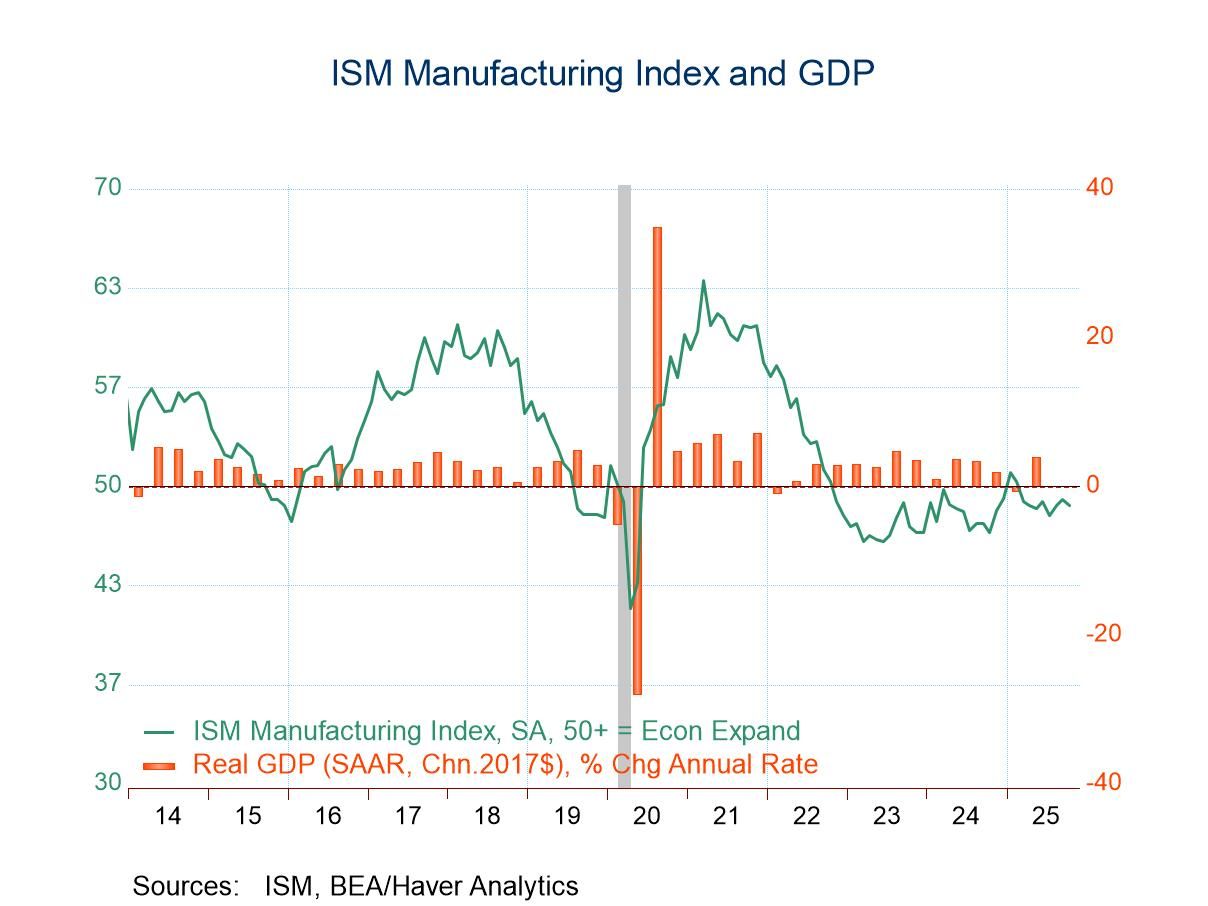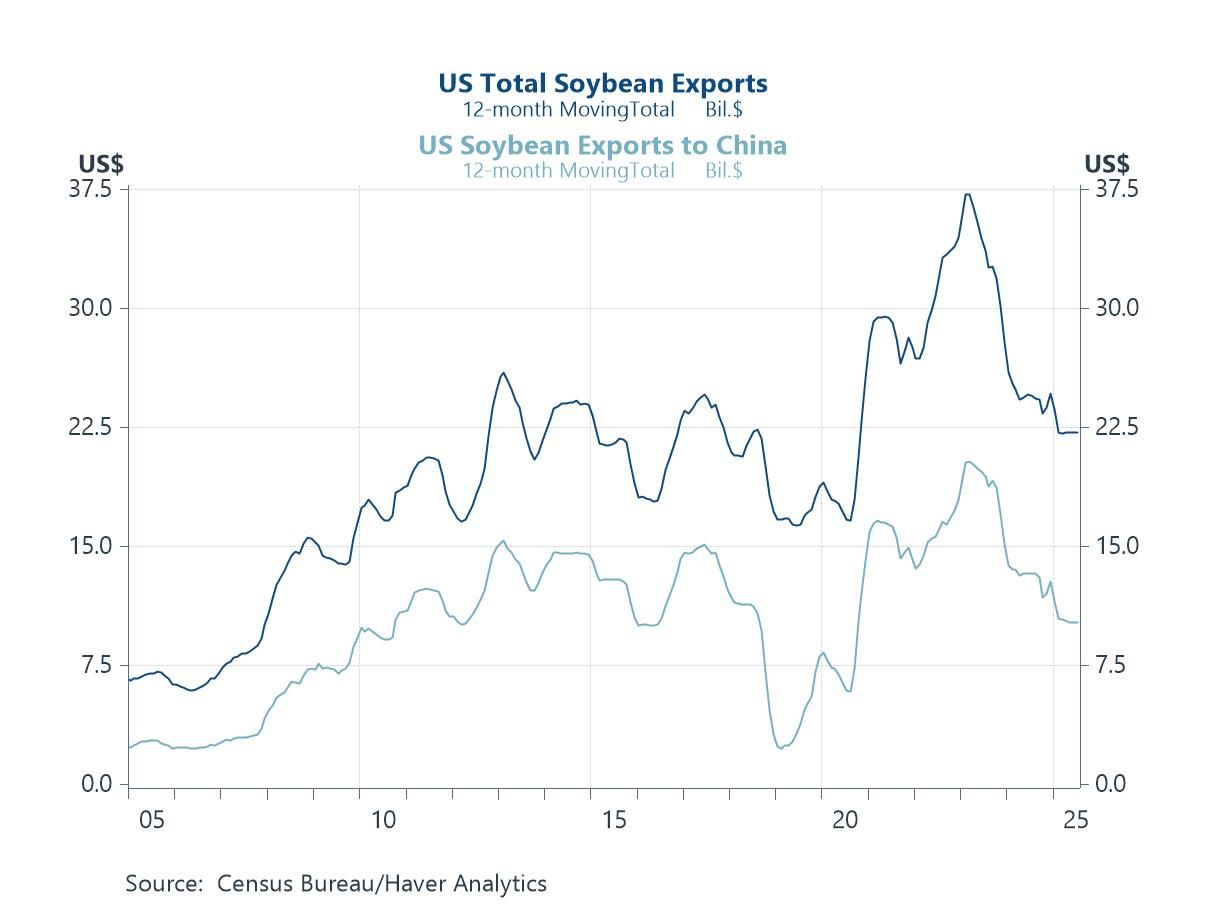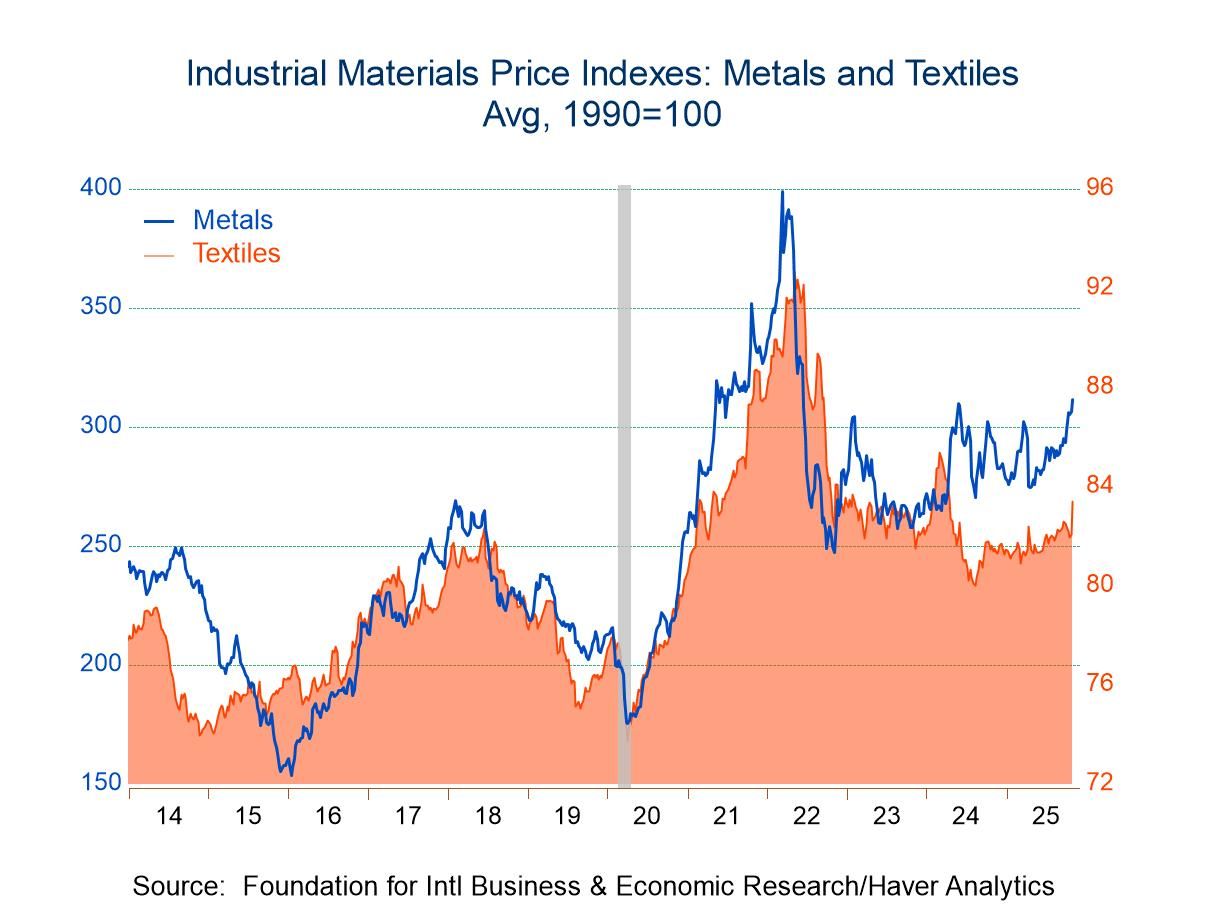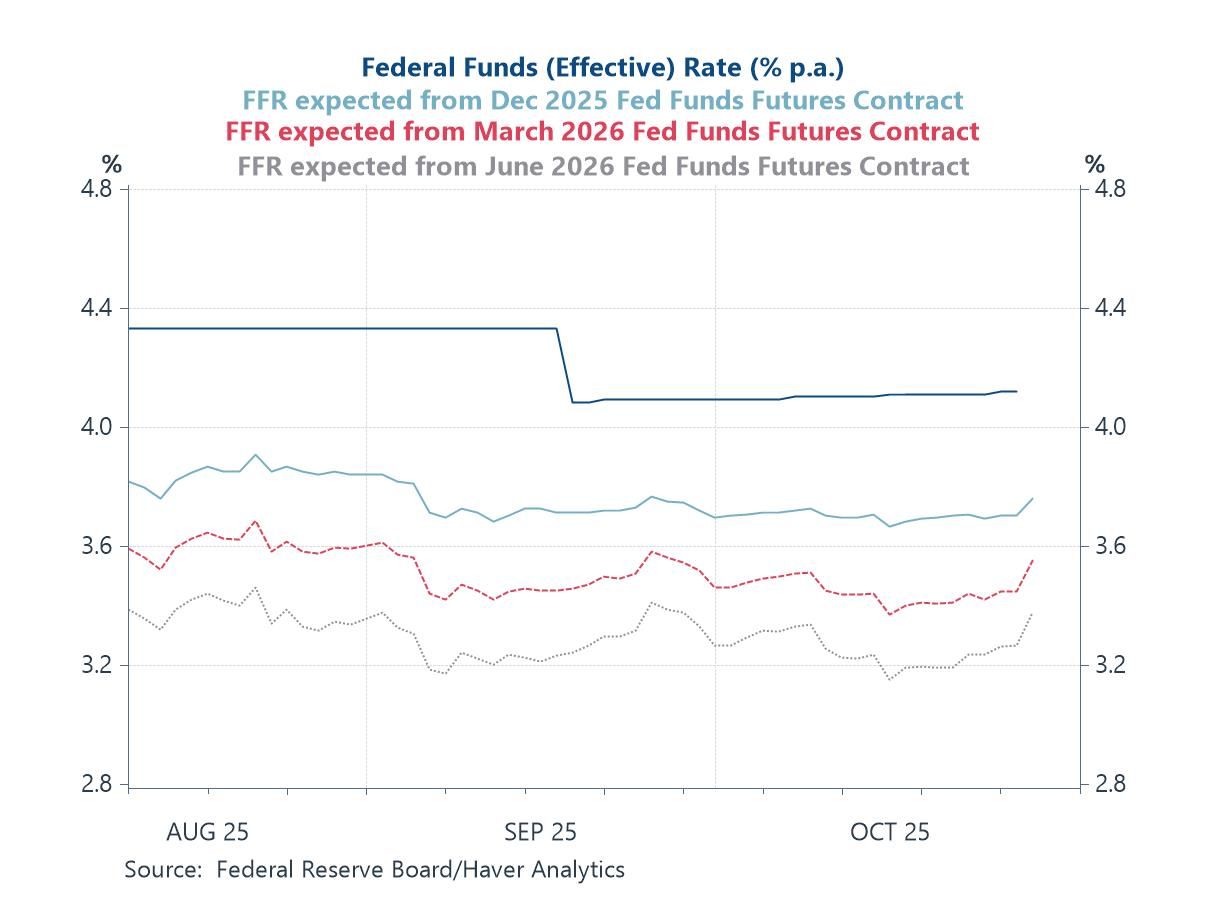 Global| Aug 01 2017
Global| Aug 01 2017U.S. Personal Income Stagnates and Spending Slows
by:Tom Moeller
|in:Economy in Brief
Summary
Personal income was unchanged during June (2.6% y/y) following a 0.3% May rise, revised from 0.4%. A 0.4% increase had been expected in the Action Economics Forecast Survey. Figures back to 2014 were revised and last year's increase [...]
Personal income was unchanged during June (2.6% y/y) following a 0.3% May rise, revised from 0.4%. A 0.4% increase had been expected in the Action Economics Forecast Survey. Figures back to 2014 were revised and last year's increase in income was lowered to 2.4% from 3.4%. The 5.0% increase in 2015 was increased from 4.4%. A 3.0% decline (+0.9% y/y) in dividend income was behind much of last month's weakness as it followed a 4.8% jump. Interest income also fell 0.9% (+2.8% y/y for a third consecutive month. Wages & salaries improved 0.4% (2.5% y/y) following a 0.1% uptick. Proprietors income eased 0.1% (+2.2% y/y) after a 0.1% rise. A 0.6% rise (5.5% y/y) in rental income followed a 0.4% increase. Transfer payments gained 0.2% (3.1% y/y) following two months of little change. Social Security payments increased 0.4% (3.7% y/y) following no change. Medicare income improved 0.2% (2.7% y/y) as it has on a monthly basis since January of last year.
Disposable income was unchanged (2.6%
y/y) following a 0.4% rise. Adjusted for price changes, take-home pay eased 0.1%
(+1.2% y/y) after a 0.5% jump.
Personal consumption expenditures improved 0.1% (3.8% y/y)
following a 0.2% rise. A 0.1% uptick had been expected. Earlier figures were
little revised. Adjusted for price change, personal spending held steady (2.4%
y/y) after a 0.2% rise. Real durable goods purchases eased 0.1% (+5.3% y/y)
after a 0.2% rise. Real nondurable goods spending fell 0.2% (+1.5% y/y)
following a 0.4% gain. Real spending on services rose 0.1% (2.2% for a second
month. The personal savings rate eased to 3.8% and the downward
revisions to income resulted in the May rate being lowered to 3.9% from 5.5%,
along with downward revisions to earlier periods. The chain-type price index held steady (1.4% y/y) for the
second straight month. Excluding food & energy, prices increased 0.1% (1.5%
y/y) also for a second consecutive month. Durable goods prices fell 0.2% (-2.0%
y/y), down for the fifth straight month. Nondurable goods prices fell 0.2%
(+0.5% y/y), after a 0.8% decline. Services prices rose 0.1% (2.3% y/y),
following a 0.2% rise. The personal income & consumption figures are available
in Haver's USECON database with detail in the USNA database. The
Action Economics figure is in the AS1REPNA database.
Personal Income & Outlays
(%)
Jun
May
Apr
Jun Y/Y
2016
2015
2014
Personal Income
-0.0
0.3
0.2
2.6
2.4
5.0
5.3
Wages & Salaries
0.4
0.1
0.6
2.5
2.9
5.1
5.1
Disposable Personal Income
-0.0
0.4
0.2
2.6
2.6
4.5
5.1
Personal Consumption Expenditures
0.1
0.2
0.3
3.8
4.0
3.9
4.4
Personal Saving Rate
3.8
3.9
3.7
5.1
(Jun '16)4.9
6.1
5.7
PCE Chain Price Index
0.0
-0.0
0.2
1.4
1.2
0.3
1.5
Less Food & Energy
0.1
0.1
0.2
1.5
1.8
1.3
1.6
Real Disposable Income
-0.1
0.5
0.0
1.2
1.4
4.2
3.6
Real Personal Consumption Expenditures
0.0
0.2
0.1
2.4
2.7
3.6
2.9
ISM Factory Sector Index Backpedals The ISM factory sector composite index fell to 56.3 during July
from June's unrevised reading of 57.8. The index has been close to this level
all year, but remained well above the 2015 low of 47.9. A level of 56.4 had been
expected in the Action Economics Forecast Survey. Declines in the component series were numerous. The new
orders series fell m/m to 60.4, down from the February high of 65.1. The
production index also eased to 60.6, but remained up from 54.0 averaged last
year. The supplier deliveries index declined to 55.4, indicating, a quicker pace
of product delivery speeds. Nevertheless, speeds have been slowing since early
last year. Working the other way, the inventories series rose to 50.0, up
sharply from late-2015. The employment figure declined m/m to 55.2, also up from a
low of 46.2 early in 2016. Payrolls have been expanding for ten straight months.
During the last ten years, there has been an 87% correlation between the index
and the m/m change in factory sector employment. Twenty-four percent (NSA) of
respondents reported higher employment while 10% indicated a decline. The prices paid index jumped to 62.0, its highest level in
three months, but remained below the March 2017 high of 70.5. Thirty-three
percent (NSA) of respondents reported paying higher prices while nine percent
paid less. The export order index eased to 57.5, down slightly from the
March high of 59.5, but up sharply from 48.6 during all of 2015. The import
order index rose to a three-year high of 56.0. The order backlog series eased to
55.0, but also remained up sharply from the 2015 low. The ISM figures are diffusion indexes where a reading above
50 indicates increase. The figures from the Institute for Supply Management can
be found in Haver's USECON database. The expectations number can be found
in Haver's AS1REPNA database.
by Tom Moeller August
1, 2017
ISM Mfg (SA)
Jul
Jun
May
Jul'16
2016
2015
2014
Composite Index
56.3
57.8
54.9
52.3
51.5
51.4
55.6
New Orders
60.4
63.5
59.5
56.1
54.7
52.6
58.9
Production
60.6
62.4
57.1
54.8
54.0
53.5
59.2
Employment
55.2
57.2
53.5
49.3
49.7
51.0
54.4
Supplier Deliveries
55.4
57.0
53.1
51.8
51.9
50.7
55.0
Inventories
50.0
49.0
51.5
49.5
47.2
49.0
50.8
Prices Paid Index (NSA)
62.0
55.0
60.5
55.0
53.5
39.8
55.6
U.S. Petroleum Prices Continue Higher Regular gasoline prices rose to $2.35 per gallon last
week (8.9% y/y) from $2.31 in the prior week. They remained down, however, from
the high of $2.45 per gallon in late-April. Haver Analytics constructs factors
adjusting for the seasonal variation in gasoline pump prices. The seasonally
adjusted gasoline price increased to $2.19 per gallon, but remained lower than
the high of $2.71 in early-January. WTI crude oil prices rose to $48.30 per barrel last
week (15.3% y/y), but remained down from $53.18 in early-April. Prices were $50.17
yesterday. Brent crude oil prices increased to $50.75 per barrel last week, then
rose to $52.64 per barrel yesterday. Natural gas prices eased to $2.94/mmbtu last week (+4.6%
y/y) and were $2.84 yesterday. Last week, gasoline demand fell 0.3% y/y, while total
petroleum product demand improved 4.6% y/y. Gasoline inventories fell 4.7%
y/y, while inventories of all petroleum products declined 2.8% y/y. Crude oil
input to refineries increased 3.2% y/y in the last four weeks. The energy price data are reported by the U.S. Department of
Energy. The petroleum demand and inventory figures are from the Oil & Gas
Journal Weekly. These data can be found in Haver's WEEKLY database. The
daily figures are in DAILY and greater detail on prices, demand and
production, along with regional breakdowns, are in OILWKLY.
by Tom Moeller August
1, 2017
Weekly Energy Prices
07/31/17
07/24/17
07/17/17
Y/Y %
2016
2015
2014
Retail Gasoline ($ per Gallon, Regular)
2.35
2.31
2.28
8.9
2.31
2.03
2.30
Light Sweet Crude Oil, WTI ($ per bbl.)
48.30
46.42
45.51
15.3
43.22
48.90
93.64
Natural Gas ($/mmbtu, LA, WSJ)
2.94
3.07
2.95
4.6
2.49
2.62
4.37
U.S. Light Vehicle Sales Improve Slightly
by Tom Moeller August 2, 2017
Total sales of light vehicles rose 0.5% during July (-5.9% y/y) to 16.77 million units (SAAR) from 16.64 million in June, according to the Autodata Corporation. Earlier data were revised.
Passenger car sales increased 3.9% (-12.5% y/y) to 6.21 million units. Domestically-made passenger car sales rose 5.1% (-12.1% y/y) to 4.55 million units. Sales of imported passenger cars improved 0.9% (-13.4% y/y) to 1.67 million units.
Light truck sales declined 1.6% (-1.6% y/y) to 10.55 million. Sales of domestically-made light trucks fell 2.5% (-4.0% y/y) to 8.68 million units. Imported light truck sales increased 3.1% (11.0% y/y) to 1.88 million units. Trucks' share of the U.S. vehicle market slipped m/m to 62.9%, but remained up from 60.1% twelve months earlier.
Imports share of the U.S. vehicle market improved m/m to 21.1%. Imports share of the passenger car market fell to 26.8%. Imports share of the light truck market increased to 17.7%, higher than the 12.7% share during all of 2014.
U.S. vehicle sales figures are published by the Autodata Corporation and can be found in Haver's USECON database.
The Low Level of Global Real Interest Rates from Federal Reserve Vice Chairman Stanley Fischer is available here https://www.federalreserve.gov/newsevents/speech/fischer20170731a.htm
U.S. vehicle sales figures are published by the Autodata Corporation and can be found in Haver's USECON database.
| Light Weight Vehicle Sales (SAAR, Million Units) | Jul | Jun | May | Jul Y/Y % | 2016 | 2015 | 2014 |
|---|---|---|---|---|---|---|---|
| Total | 16.77 | 16.70 | 16.79 | -5.9 | 17.55 | 17.42 | 16.52 |
| Autos | 6.21 | 5.98 | 6.24 | -12.5 | 7.10 | 7.73 | 7.92 |
| Domestic | 4.55 | 4.33 | 4.51 | -12.1 | 5.20 | 5.63 | 5.68 |
| Imported | 1.67 | 1.65 | 1.73 | -13.4 | 1.90 | 2.10 | 2.24 |
| Light Trucks | 10.55 | 10.72 | 10.55 | -1.6 | 10.44 | 9.74 | 8.60 |
| Domestic | 8.68 | 8.90 | 8.65 | -4.0 | 8.75 | 8.37 | 7.51 |
| Imported | 1.88 | 1.82 | 1.91 | 11.0 | 1.69 | 1.38 | 1.09 |
Tom Moeller
AuthorMore in Author Profile »Prior to joining Haver Analytics in 2000, Mr. Moeller worked as the Economist at Chancellor Capital Management from 1985 to 1999. There, he developed comprehensive economic forecasts and interpreted economic data for equity and fixed income portfolio managers. Also at Chancellor, Mr. Moeller worked as an equity analyst and was responsible for researching and rating companies in the economically sensitive automobile and housing industries for investment in Chancellor’s equity portfolio. Prior to joining Chancellor, Mr. Moeller was an Economist at Citibank from 1979 to 1984. He also analyzed pricing behavior in the metals industry for the Council on Wage and Price Stability in Washington, D.C. In 1999, Mr. Moeller received the award for most accurate forecast from the Forecasters' Club of New York. From 1990 to 1992 he was President of the New York Association for Business Economists. Mr. Moeller earned an M.B.A. in Finance from Fordham University, where he graduated in 1987. He holds a Bachelor of Arts in Economics from George Washington University.






